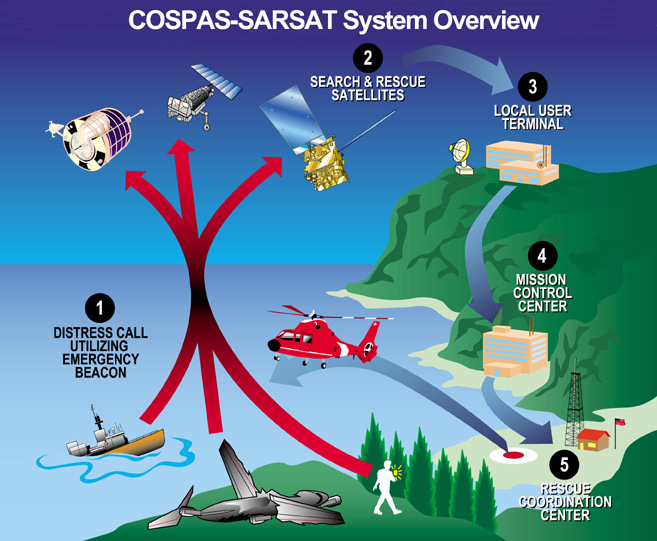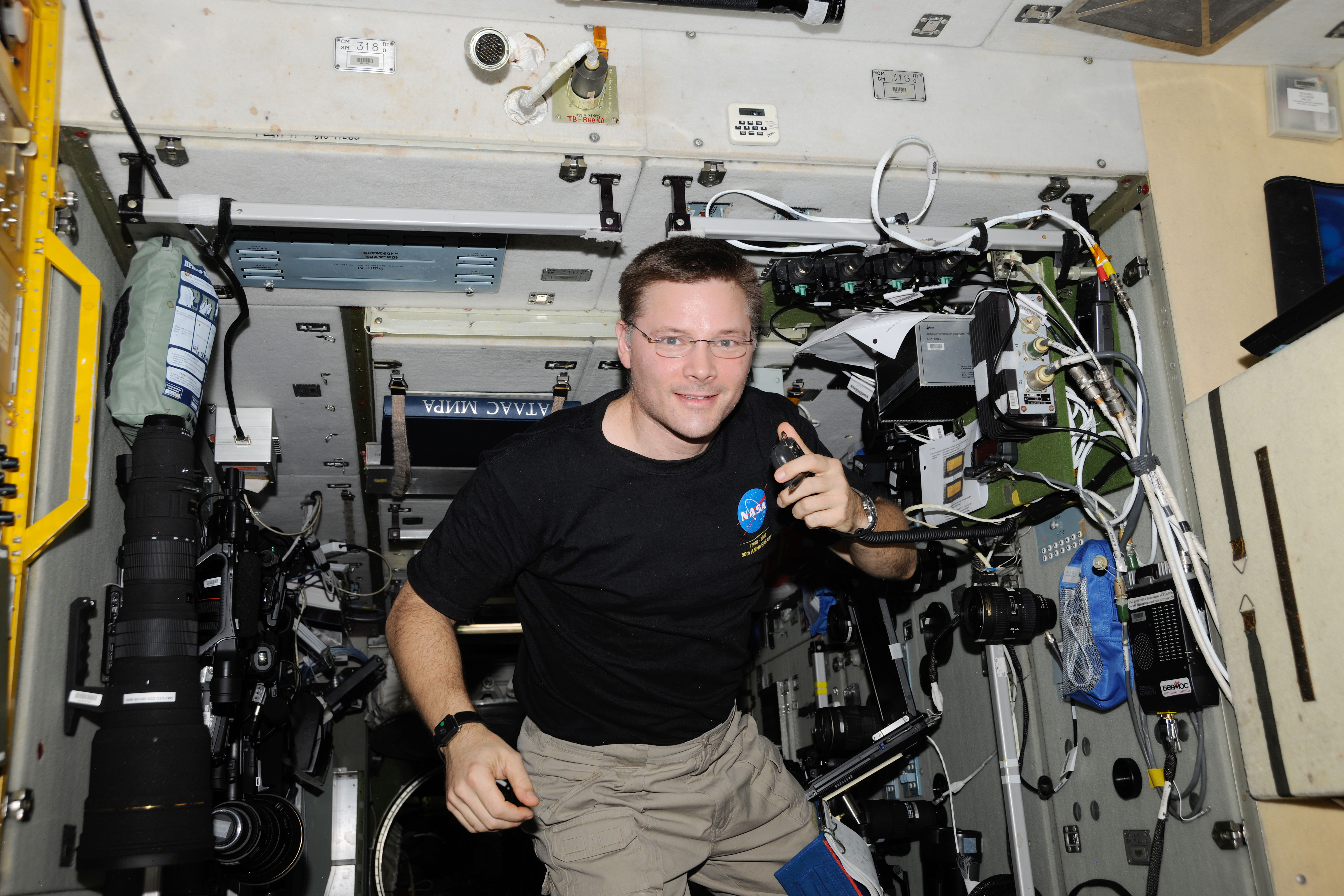|
Global Maritime Distress And Safety System
The Global Maritime Distress and Safety System (GMDSS) is a worldwide system for automated emergency signal communication for ships at sea developed by the United Nations' International Maritime Organization (IMO) as part of the SOLAS Convention. It's a set of safety procedures, types of equipment, and communication protocols used for safety and rescue operations of the distressed ships, boats, and aircraft. It's supplemental to the International Convention on Maritime Search and Rescue (ICMSaR) adopted in 1979 and provides basis for the communication. GMDSS consists of several systems which are intended to perform the following functions: alerting (including position determination of the ship in distress) ships in the vicinity and ashore authorities, search and rescue coordination, locating (homing), maritime safety information broadcasts, general communications, and bridge-to-bridge communications. Specific radio carriage requirements depend upon the ship's area of operatio ... [...More Info...] [...Related Items...] OR: [Wikipedia] [Google] [Baidu] |
International Maritime Organization
The International Maritime Organization (IMO, French: ''Organisation maritime internationale'') is a specialised agency of the United Nations responsible for regulating shipping. The IMO was established following agreement at a UN conference held in Geneva in 1948 and the IMO came into existence ten years later, meeting for the first time in 1959. Headquartered in London, United Kingdom, IMO currently has 175 Member States and three Associate Members. The IMO's primary purpose is to develop and maintain a comprehensive regulatory framework for shipping and its remit today includes maritime safety, environmental concerns, legal matters, technical co-operation, maritime security and the efficiency of shipping. IMO is governed by an assembly of members which meets every two years. Its finance and organization is administered by a council of 40 members elected from the assembly. The work of IMO is conducted through five committees and these are supported by technical subcommitte ... [...More Info...] [...Related Items...] OR: [Wikipedia] [Google] [Baidu] |
Global Positioning System
The Global Positioning System (GPS), originally Navstar GPS, is a satellite-based radionavigation system owned by the United States government and operated by the United States Space Force. It is one of the global navigation satellite systems (GNSS) that provides geolocation and time information to a GPS receiver anywhere on or near the Earth where there is an unobstructed line of sight to four or more GPS satellites. It does not require the user to transmit any data, and operates independently of any telephonic or Internet reception, though these technologies can enhance the usefulness of the GPS positioning information. It provides critical positioning capabilities to military, civil, and commercial users around the world. Although the United States government created, controls and maintains the GPS system, it is freely accessible to anyone with a GPS receiver. The GPS project was started by the U.S. Department of Defense in 1973. The first prototype spacecraft was lau ... [...More Info...] [...Related Items...] OR: [Wikipedia] [Google] [Baidu] |
Emergency Position-Indicating Radio Beacon
An Emergency Position-Indicating Radio Beacon (EPIRB) is a type of emergency locator beacon for commercial and recreational boats, a portable, battery-powered radio transmitter used in emergencies to locate boaters in distress and in need of immediate rescue. In the event of an emergency, such as a ship sinking or medical emergency onboard, the transmitter is activated and begins transmitting a continuous 406 MHz distress radio signal, which is used by search-and-rescue teams to quickly locate the emergency and render aid. The signal is detected by satellites operated by an international consortium of rescue services, COSPAS-SARSAT, which can detect emergency beacons anywhere on Earth transmitting on the distress frequency of 406 MHz. The satellites calculate the position or utilize the GPS coordinates of the beacon and quickly passes the information to the appropriate local first responder organization, which performs the search and rescue. As Search and Rescue approach the ... [...More Info...] [...Related Items...] OR: [Wikipedia] [Google] [Baidu] |
Cospas-Sarsat
The International Cospas-Sarsat Programme is a satellite-aided search and rescue (SAR) initiative. It is organized as a treaty-based, nonprofit, intergovernmental, humanitarian cooperative of 45 nations and agencies (see infobox). It is dedicated to detecting and locating emergency locator radio beacons activated by persons, aircraft or vessels in distress, and forwarding this alert information to authorities that can take action for rescue. Distress alerts are detected, located and forwarded to over 200 countries and territories at no cost to beacon owners or the receiving government agencies. Cospas-Sarsat was conceived and initiated by Canada, France, the United States, and the former Soviet Union in 1979. The first rescue using the technology of Cospas-Sarsat occurred on . The definitive agreement of the organization was signed by those four States as the "Parties" to the agreement on 1 July 1988. The term Cospas-Sarsat derives from COSPAS (КОСПАС), an acronym f ... [...More Info...] [...Related Items...] OR: [Wikipedia] [Google] [Baidu] |
Telecommunications Act Of 1996
The Telecommunications Act of 1996 is a United States federal law enacted by the 104th United States Congress on January 3, 1996, and signed into law on February 8, 1996, by President Bill Clinton. It primarily amended Chapter 5 of Title 47 of the United States Code, The act was the first significant overhaul of United States telecommunications law in more than sixty years, amending the Communications Act of 1934, and represented a major change in American telecommunication law, because it was the first time that the Internet was included in broadcasting and spectrum allotment.The Telecommunications Act of 1996. Title 3, sec. 301. Retrieved frofcc.gov (2011) The goal of the law was to "let anyone enter any communications business – to let any communications business compete in any market against any other." The legislation's primary goal was deregulation of the converging broadcasting and telecommunications markets. The law's regulatory policies have been criticized, includin ... [...More Info...] [...Related Items...] OR: [Wikipedia] [Google] [Baidu] |
International Convention For The Safety Of Life At Sea
The International Convention for the Safety of Life at Sea (SOLAS) is an international maritime treaty that sets minimum safety standards in the construction, equipment and operation of merchant ships. The International Maritime Organization convention requires signatory flag states to ensure that ships flagged by them comply with at least these standards. The current version of SOLAS is the 1974 version, known as SOLAS 1974, which came into force on 25 May 1980. , SOLAS 1974 has 167 contracting states, which flag about 99% of merchant ships around the world in terms of gross tonnage. SOLAS in its successive forms is generally regarded as the most important of all international treaties concerning the safety of merchant ships. Signatories The non-parties to SOLAS 1974 include numerous landlocked countries (for obvious reasons), as well as El Salvador, Micronesia and East Timor. Some others including Bolivia, Lebanon and Sri Lanka, all considered flag of convenience states, a ... [...More Info...] [...Related Items...] OR: [Wikipedia] [Google] [Baidu] |
Mayday (distress Signal)
Mayday is an emergency procedure word used internationally as a distress signal in voice-procedure radio communications. It is used to signal a life-threatening emergency primarily by aviators and mariners, but in some countries local organizations such as firefighters, police forces, and transportation organizations also use the term. Convention requires the word be repeated three times in a row during the initial emergency declaration ("Mayday mayday mayday") to prevent it being mistaken for some similar-sounding phrase under noisy conditions, and to distinguish an ''actual'' mayday call from a message ''about'' a mayday call. History The "mayday" procedure word was conceived as a distress call in the early 1920s by Frederick Stanley Mockford, officer-in-charge of radio at Croydon Airport, England. He had been asked to think of a word that would indicate distress and would easily be understood by all pilots and ground staff in an emergency. Since much of the air traffic at t ... [...More Info...] [...Related Items...] OR: [Wikipedia] [Google] [Baidu] |
Amateur Radio Operator
An amateur radio operator is someone who uses equipment at an amateur radio station to engage in two-way personal communications with other amateur operators on radio frequencies assigned to the amateur radio service. Amateur radio operators have been granted an amateur radio license by a governmental regulatory authority after passing an examination on applicable regulations, electronics, radio theory, and radio operation. As a component of their license, amateur radio operators are assigned a call sign that they use to identify themselves during communication. About three million amateur radio operators are currently active worldwide. Amateur radio operators are also known as radio amateurs or hams. The term "ham" as a nickname for amateur radio operators originated in a pejorative usage (like "ham actor") by operators in commercial and professional radio communities, and dates to wired telegraphy. The word was subsequently adopted by amateur radio operators. Demographics {, ... [...More Info...] [...Related Items...] OR: [Wikipedia] [Google] [Baidu] |
Satellite
A satellite or artificial satellite is an object intentionally placed into orbit in outer space. Except for passive satellites, most satellites have an electricity generation system for equipment on board, such as solar panels or radioisotope thermoelectric generators (RTGs). Most satellites also have a method of communication to ground stations, called Transponder (satellite communications), transponders. Many satellites use a Satellite bus, standardized bus to save cost and work, the most popular of which is small CubeSats. Similar satellites can work together as a group, forming Satellite constellation, constellations. Because of the high launch cost to space, satellites are designed to be as lightweight and robust as possible. Most communication satellites are radio Broadcast relay station, relay stations in orbit and carry dozens of transponders, each with a bandwidth of tens of megahertz. Satellites are placed from the surface to orbit by launch vehicles, high enough to ... [...More Info...] [...Related Items...] OR: [Wikipedia] [Google] [Baidu] |
Portishead Radio
Portishead Radio (callsign GKA) was a radio station in England that provided worldwide maritime communications and long-range aeronautical communications from 1928 until 2000. It was the world's largest and busiest long-distance HF maritime radio station. In 1974, the station employed 154 radio operators who handled over 20 million words per year. It was originally operated by the General Post Office (GPO), then the Post Office (1969–1981) and subsequently by British Telecom, which was privatised in 1984. 1920–1939 The UK's long-range maritime service commenced from a site at Morgan's Hill, Devizes, Wiltshire, in 1920. In 1925, a remote receiving centre at Highbridge, near Burnham-on-Sea, Somerset, was opened, and in 1928 a transmitting station was opened at Portishead, from which the name 'Portishead Radio' was derived. The main transmitting station, which was remotely operated from the Highbridge site, originally consisted of a large array of radio masts at nearby Porti ... [...More Info...] [...Related Items...] OR: [Wikipedia] [Google] [Baidu] |





